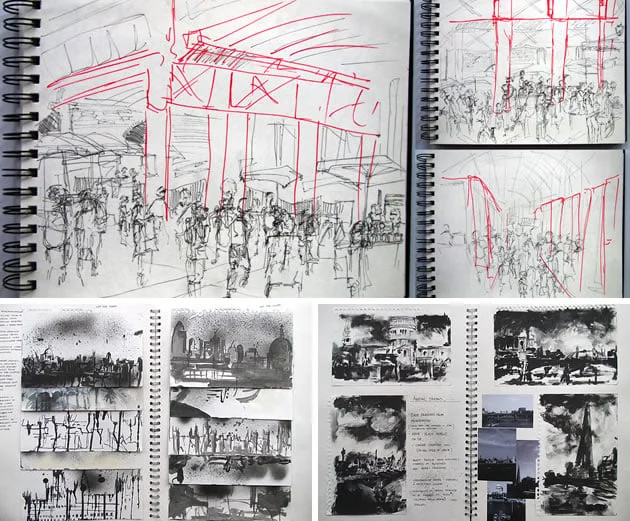Introduction: The Gateway to Architectural Excellence
Your architecture portfolio is more than a collection of sketches and designs; it’s your passport to the world of architectural academia. Crafting a compelling portfolio is essential for university admission, as it showcases your creativity, technical skills, and passion for the built environment. Let’s delve into what it takes to create an exceptional architecture portfolio that captures the attention of admissions committees.
Understanding the Purpose of Your Portfolio
1. Showcasing Your Skills and Creativity
Your portfolio serves as a visual narrative of your journey as an aspiring architect. It’s an opportunity to demonstrate your design prowess, technical proficiency, and innovative thinking through a curated selection of projects, sketches, and conceptual explorations.
2. Reflecting Your Design Process
Admissions committees are interested not only in the final outcomes but also in your design process. Your portfolio should provide insights into how you approach architectural challenges, from initial concepts to final execution. Including sketches, diagrams, and process documentation helps convey your thought process and problem-solving abilities.
3. Highlighting Your Passion and Personality
Beyond technical skills, admissions committees seek candidates who are passionate about architecture and possess a unique perspective. Your portfolio should reflect your personality, interests, and inspirations, giving reviewers a glimpse into what drives and motivates you as an aspiring architect.
Key Elements to Include in Your Architecture Portfolio
1. Cover Page and Introduction
Your portfolio should begin with a captivating cover page and a brief introduction that showcases your name, contact information, and a concise statement about your aspirations and interests in architecture. Use this section to set the tone and grab the reader’s attention from the start.
2. Selected Projects
a. Design Projects
Include a diverse range of design projects that demonstrate your skills in architectural design, spatial planning, and creativity. Select projects that showcase your ability to tackle different typologies, scales, and design challenges. Provide a brief overview of each project, including its context, objectives, and your design approach.
b. Sketches and Drawings
Integrate sketches, drawings, and conceptual explorations that highlight your hand-drawing skills and ideation process. Sketches offer insights into your design thinking and can be instrumental in conveying your creativity and conceptualization abilities.
3. Technical Proficiency
a. Digital Renders and Models
Incorporate digital renders, 3D models, and visualizations that showcase your proficiency in architectural software such as AutoCAD, Revit, SketchUp, or Rhino. Highlight your ability to translate design concepts into detailed and visually compelling representations.
b. Technical Drawings and Construction Documents
Include technical drawings, plans, sections, and construction details that demonstrate your understanding of architectural principles, building systems, and construction techniques. These drawings should reflect your ability to communicate design intent effectively and adhere to industry standards.
4. Additional Content
a. Photographs and Site Visits
Include photographs of completed projects, site visits, and architectural inspirations that have influenced your design philosophy. These visual references add depth to your portfolio and provide context for your design decisions.
b. Academic Work and Research
Highlight relevant academic projects, research papers, or extracurricular activities that showcase your academic curiosity, analytical skills, and commitment to the field of architecture. This could include design studios, thesis projects, or participation in architectural competitions.
Presentation and Organization Tips
1. Visual Cohesion and Consistency
Ensure visual cohesion and consistency throughout your portfolio by maintaining a cohesive color palette, typography, and layout style. Aim for a clean and professional presentation that enhances the readability and visual appeal of your portfolio.
2. Clear and Concise Descriptions
Provide clear and concise descriptions for each project, focusing on key aspects such as design objectives, context, challenges, and your design approach. Use bullet points or short paragraphs to convey information succinctly and effectively.
3. Attention to Detail
Pay attention to detail in both content and presentation. Double-check for typos, formatting errors, and image quality to ensure a polished and professional portfolio. Presentation matters as much as content, so invest time in refining the layout, formatting, and overall aesthetics of your portfolio.
Conclusion: Elevating Your Architectural Journey Through Your Portfolio
Crafting an exceptional architecture portfolio for university admission requires careful planning, creativity, and attention to detail. By showcasing your skills, creativity, and passion for architecture, your portfolio becomes a powerful tool for expressing your identity as an aspiring architect and gaining admission to your desired program.
As you compile and refine your portfolio, remember to stay true to yourself, your design philosophy, and your aspirations. Let your portfolio reflect not only your technical abilities but also your personality, interests, and vision for the future of architecture. With a well-crafted portfolio in hand, you’re ready to embark on your journey towards architectural excellence and academic success.This comprehensive guide equips you with the knowledge and insights needed to create a standout architecture portfolio that sets you apart in the competitive landscape of university admissions.




